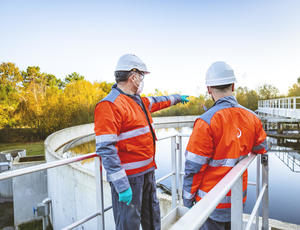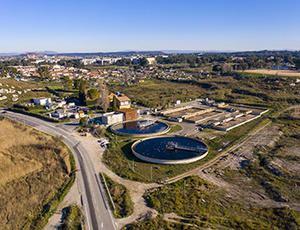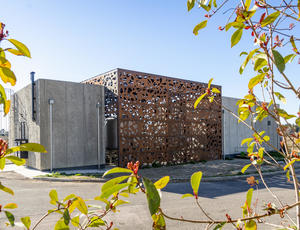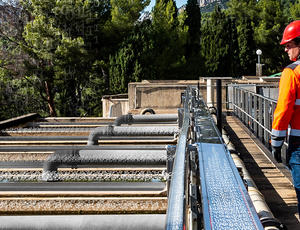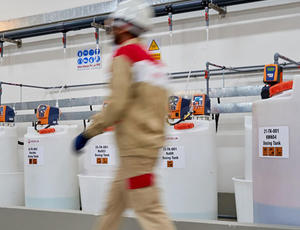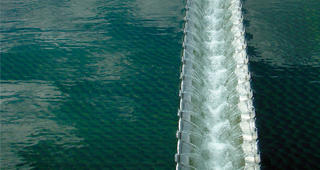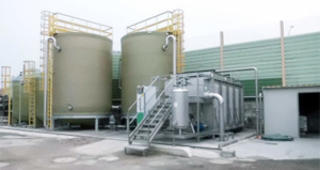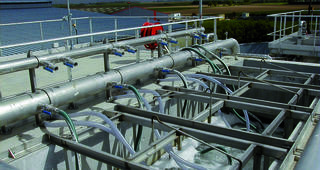Multiflo™ is a clarification process technology that covers a wide variety of applications.
Overview
Multiflo is a universal and multi-purpose water clarification process technology that can be adapted to meet various wastewater purification needs of municipal and industrial clients.
Ideal for small to large-sized plants, Multiflo can be used to treat any kind of water characteristics and remove pollutants including total suspended solids (TSS), carbonaceous pollutants, phosphorus, algae and heavy metal co-precipitates.
In the municipal market, Multiflo can treat water with an average to high turbidity level of 10 to 4,000 milligrams per liter (mg/l) of TSS, producing water with less turbidity, depending on the water characteristics. In particular, it is less than 3 nephelometric turbidity units (NTU), for drinking water applications.
Multiflo is a prime tool of water clarification in the industry. It can be used both for process water production in the power, steel mill, pulp and paper or food and bev to produce high quality service water. Likewise it is also possible to use Multiflo to treat waste water from these industries and enable them to comply with stringent discharge consent.
How does it work?
Reagents, a coagulant and a flocculant, are injected respectively in the coagulation and flocculation tank of the Multiflo. These reagents come into contact with the pollutants, organic matter and suspended solids precipitated to form micro-flocs that swell and mature to form large, easy-to-settle flocs..
Water then enters into the lamella settlement zone where gravity separates floc from clarified water. The floc settles at the bottom of this clarification area and is removed as liquid sludge whilst the clarified water is free of most impurities (organic matter, metals, oil and grease is allowed to gravity out).
The lamella settling stage
After flocculation, the flocculated water leaves the flocculation tank and enters the bottom of the lamella settling tank. The water flows upward, in the opposite direction to the settling flocs, which are deposited along the lamella plates and settle downward under the effect of gravity.
Inclined lamella plates located side-by-side create modular sedimentation units to provide a larger settling surface area within a similar footprint. Moreover, the lamella plates enhance the settling of the less soluble flocs by improving the hydraulic distribution of the water and reducing turbulence. To facilitate maintenance, an automatic cleaning system for the lamellar plates, using air scouring, can be provided on demand.
The flocs then collect at the bottom of the lamella settling tank as sludge and are regularly removed utilizing either a suction draw-off or scraper mechanism.

The Multiflo range provides efficient treatment adapted to meet your needs, offering several treatment solutions depending on the required water treatment objectives and the inlet water quality.
Compact: the lamella plates provide a large projected settling area in a limited space with a footprint of 10 to 20 times less compared to a conventional settler system.
Flexibility and reliability: Multiflo consistently achieves high settled water quality and reliably clarifies variable raw water qualities.
Optimized control system: Multiflo can be managed with the Predifloc™ advanced control system - module of Hubgrade Wastewater Plant Performance digital solution - allowing for optimization of physical-chemical treatments. This minimizes reagent consumption and decreases operating costs.
Simple installation and operation: all units in the Multiflo range incorporate a lamella plate system which is both easy to install and maintain.
Applications
Services
Resources & Product range
Depending on your needs, Multiflo is available in four configurations: Multiflo™ Mono and Multiflo™ Mono Plus for wastewater applications; Multiflo™ Duo and Multiflo™ Trio, are both suitable for drinking water and wastewater applications.
Multiflo™ Mono
Mono is suitable for easy settling without adding chemical reagents and with a sludge thickening system. This configuration is recommended for partial silt removal of surface water, partial stormwater treatment and partial primary treatment of wastewater.
Multiflo™ Mono Plus
Mono Plus is specifically designed to clarify mixed liquor from an upstream-activated sludge aeration tank. Similar to the Multiflo Mono principle, Multiflo Mono Plus provides a sludge draw-off system based on suction, which controls both extraction and sludge bed levels in the settling tank.
Multiflo™ Duo
Similar to the Multiflo Mono clarification principle, Multiflo Duo uses upstream chemical reagents to enhance the settling performances of the process. It is suitable for surface water turbidity removal for drinking water, advanced stormwater treatment, primary and tertiary wastewater treatment and the treatment of sludge from biofilter backwashes.
Multiflo™ Trio
Multiflo Trio combines the performance of the Multiflo Duo with the advantages of physical-chemical sludge recirculation, optimization of reagent consumption, and improvement in sludge settling and thickening. It’s the ideal solution for reducing raw water turbidity in drinking water, pesticide removal from raw water, and is an advanced primary or tertiary wastewater treatment.
The Multiflo™ technology is also available in a modular design of packaged plants: Multiflo™ Pack. This configuration offers all the advantages of the technology in a standardized product range with four possible options mentioned above (Mono, Mono Plus, Duo, Trio). Depending on the option chosen, it can contain one to three steel or plastic tanks to cover two to four treatment steps.
Contact
Multiflo is unique in the market for universal, reliable and sustainable clarification processes: unique in the market for its ability to clarify any type of effluent that can be settled in municipal wastewater, drinking water and industrial process water by adapting its configuration from a single, proven base. To date, it has been used at over 500 sites worldwide, and we believe this is due to our ongoing efforts to improve and optimize the technology, and to ensure effective and extensive application knowledge. Multiflo is also unique for its simplicity of operation and very low energy consumption, making it the ideal solution for sustainability requirements.
Pierre Verdun
Expert in separation technologies -
Technical Direction of Veolia Water Technologies
FAQ about Multiflo™
Why does municipal wastewater need to be treated?
Municipal wastewater needs treatment for several reasons: Protecting the environment: Raw wastewater contains a mix of contaminants including pathogens (bacteria, viruses, etc.), nutrients (like nitrogen and phosphorus), organic matter, suspended solids, and potentially toxic chemicals. Discharging untreated wastewater into natural water bodies can harm aquatic life, ecosystems, and public health.
Public health concerns: Pathogens present in untreated wastewater can spread diseases. Proper treatment reduces the risk of waterborne illnesses, protecting both human and environmental health.
Preventing water pollution: Untreated wastewater contains pollutants that can degrade water quality, affecting drinking water sources, recreational areas, and ecosystems. Treatment removes or significantly reduces these pollutants before discharge.
Compliance with regulations: Municipalities are often required by law to treat wastewater before releasing it into the environment. Regulatory standards exist to ensure that discharged water meets certain quality criteria to safeguard public health and the environment.
Reusing water resources: Treated wastewater can be recycled for non-potable uses like irrigation, industrial processes, or even certain types of non-drinking urban uses. Proper treatment makes this water safe for its intended reuse, conserving freshwater resources.
These processes vary in complexity depending on the level of treatment needed and the specific contaminants present in the wastewater.
What are the benefits of municipal wastewater treatment?
Effective municipal wastewater treatment can produce both clean and reusable water, as well as reducing overall waste production. Key benefits are:
- Wastewater treatment reduces the amount of waste and harmful contaminants released into the environment.
- Water loss due to water pollution is reduced or eradicated.
- Recovering reusable biogas as well as natural fertilizer to be used in agriculture.
- Simplified waste disposal significantly reduces costs.
- Regional wastewater treatment and effluent standards can be met and maintained, and regulatory compliance can be continuously monitored.
What happens to sludge in the municipal wastewater treatment process?
In the municipal wastewater treatment process, sludge undergoes several stages to be treated and managed properly. Sludge is the solid residue that remains after the Multiflo treatment process and consists of both organic and inorganic materials.
Here's a general overview of what happens to sludge in the wastewater treatment process:
Thickening: Initially, sludge is often passed through a thickening process to remove excess water, reducing its volume. This is typically done using gravity thickeners or centrifuges.



